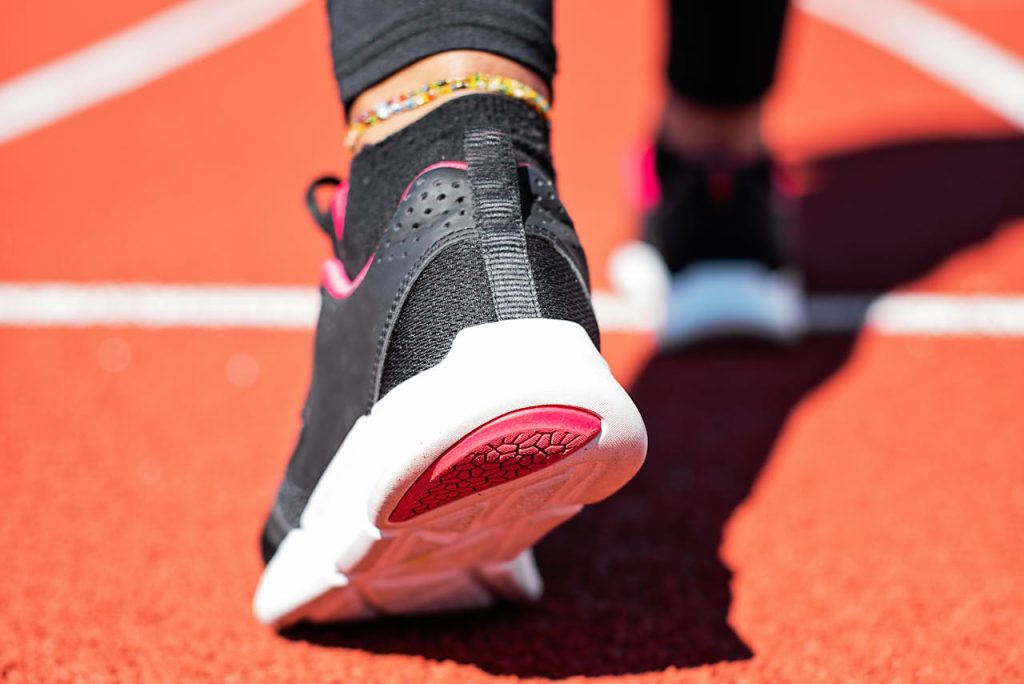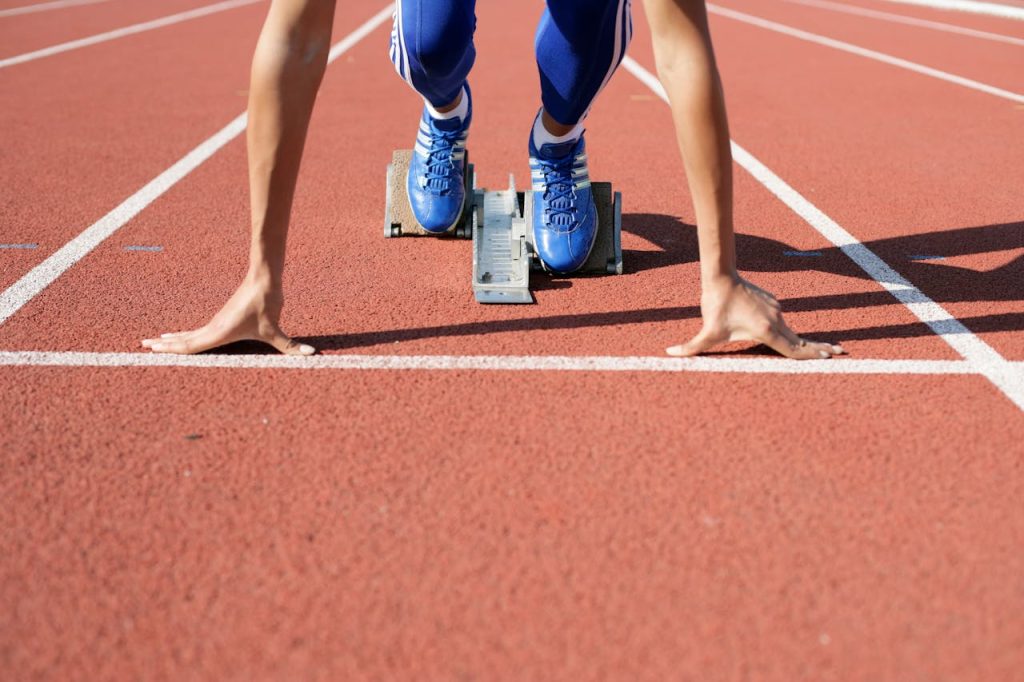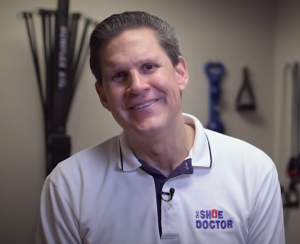Custom orthotics are medical devices that are designed specifically for the unique contours of an individual’s foot. They assist by providing support, relieving pain, and correcting posture or gait. Most custom orthotics are constructed from a foot scan or mold, so they correspond to the foot’s curves and trouble areas. They do this by distributing weight more evenly, providing additional cushioning, and controlling the experienced motion of the foot during each step. Millions of flat-footed, high-arched, and foot-pain sufferers utilize them on a daily basis. Doctors tend to recommend custom orthotics for those with injuries or chronic pain in the feet, knees, or back. In the next section, browse the custom orthotics guide to discover how they help and what to expect.
Key Takeaways
- Custom orthotics are tailor-made medical appliances that target unique foot issues and provide more accurate support than generic insoles. Seeing a qualified podiatrist is the way to go, in order to be sure the orthotic is customized to your specific foot shape and activities.
- The effectiveness of custom orthotics relies on comprehensive biomechanical assessments, digital scanning, and a precise fitting process. Collaborating closely with healthcare providers during these steps leads to greater comfort and long-term foot health benefits.
- So how do custom orthotics work? They function by correcting biomechanical imbalances, redistributing pressure, and providing targeted arch support to alleviate pain and prevent further injury. These advantages enhance mobility and quality of life for individuals across the board.
- Material craftsmanship, combined with new technology, is what makes custom orthotics durable, comfortable, and high performing. With high quality materials and a conscientious awareness of new innovations, you can maximize the lifespan and effectiveness of your orthotics.
- They require regular follow ups and periodic adjustments as foot conditions and lifestyles shift. Keeping an eye on the wear and fit of your orthotics keeps them providing you with the best support possible.
- If you are faced with regular foot discomfort, chronic pain or mobility issues get yourself professionally checked for custom made orthotics. Being proactive about individualized foot care can reap significant rewards and keep you out of trouble.
What Are Custom Orthotics?
They are made from a precise shape of your feet and serve to support, align, or enhance the function of your feet. Unlike the insoles you pick up in the aisle, custom orthotics are created from a 3-D model of your foot to your individual structure. They’re typically prescribed by podiatrists to treat foot pain, chronic issues, or biomechanical issues. They’re more than just comfy; custom orthotics seek to correct abnormal movements and redistribute pressure throughout the body, so they can assist with issues ranging from arthritis to plantar fasciitis.
Beyond Insoles
Custom orthotics aren’t mushy shoe inserts. Every single pair is hand-crafted by artisans, molded to the precise shape of your feet. They provide targeted support, relieving pressure where you need it most, and assist in addressing pain that persists despite the use of over-the-counter inserts. Fit is key — when orthotics contour specifically to your feet, they function better and feel more organic. Designed to fit in most footwear – from athletic sneakers to dress shoes – you can have relief on the go.
The Prescription
Getting custom orthotics begins with a trip to a podiatrist. The physician examines your feet, observes your gait, and discusses your symptoms and lifestyle. This check is essential to identify the correct device for you. The prescription can vary from individual to individual, depending on foot shape, medical issues, or lifestyle—such as if you run a lot or stand all day. For optimal results, be sure to follow the wear schedule, typically ramping up over a few weeks.
Your Footprint
A biomechanical exam and gait analysis reveals how your feet move and things might go awry. By analyzing your footprint and gait, experts determine whether your feet overpronate or under pronate. This data assists in creating orthotics that align your joints and reduce pain. New computer scans make the process more precise, forming a digital ‘map’ of your feet for an improved fit.
The Materials
They can be made of foam, plastic or gel. Each material delivers a unique combination of support and plushness. Foam pads aching areas, while rigid plastic keeps your foot stable. Tough materials are important because orthotics can last as long as four years of everyday wear. Tech innovations have made them lighter and comfier than ever.
The Purpose
Their primary objective is to correct your foot motion. They assist with pain from issues such as plantar fasciitis and arthritis. Orthotics optimize foot function, which makes walking, running, or standing more effortless. With the proper fit, they might just prevent new injuries before they begin.
How Custom Orthotics Work
Custom orthotics are medical devices that are molded to the specific shape of each individual foot. They do this by guiding the foot into a better position as you walk, which provides relief for pain and improves stability. These orthotics are constructed following a biomechanical exam and patient history review.
Functional orthotics provide corrected control over abnormal movement, whereas accommodative orthotics provide additional support and comfort. Both employ robust materials and can endure for years with proper maintenance.
Correcting Alignment
Custom orthotics correct misalignments in the foot and ankle — like overpronation or supination — by guiding the foot during each step. This correction is critical for flat-footed individuals or those who experienced injuries that shifted their natural foot posture.
Proper alignment is about more than just the feet. When your foot and ankle are aligned correctly, it lifts up your knees, hips and even spine. This can optimize how one walks and stands, making everyday movement more fluid and less draining. Without proper alignment, repetitive stress accumulates, which can result in or aggravate chronic pain and joint issues. Custom orthotics assist in rehab after injuries by maintaining foot stability and reducing stress on healing tissues.
Redistributing Pressure
Custom orthotics distribute weight across the whole foot, reducing pressure on a single point. For those with bunions, diabetic ulcers or arthritis, this can be a huge difference.
Through pressure control, orthotics can minimize fatigue and alleviate pain associated with prolonged standing or walking. This is particularly beneficial for medical professionals, educators, or athletes who remain standing throughout the day. Even calluses and ulcers can be prevented, as decreased pressure translates to fewer areas for skin breakdown. In sports, improved pressure dispersion can aid in quicker recovery and higher performance by reducing the likelihood of overuse injuries.
Supporting Arches
Arch support is key to keeping the foot grounded and functioning properly. Custom orthotics provide support where it’s needed most, regardless if your arch is too low or high.
They assist with plantar fasciitis and heel pain by reducing tension on the arch and surrounding tissues. Great arch support improves balance, which is beneficial for both day-to-day movement and sports.
Personalized Adaptation
Custom orthotics are constructed for a specific individual’s foot type, gait, and requirements.
They adjust to changes over time.
No single orthotic works for everyone.
Custom fit gives the best results.
The Creation Process
Custom orthotics are crafted through a specific, multi-step process that begins with an in-depth examination of the patient’s feet, gait, and individual requirements. Every step ensures the device properly supports the foot and fits correctly, which is crucial for comfort and long-term wear.
The Assessment
It starts with an evaluation by a professional podiatrist. This phase is not merely the examination of the feet, but involves studying how you stand, walk and move around during the day.
Doctors check a few things during this step. They take into account your foot shape, arch height, gait, injury history and even what shoes you wear most. Medical history factors in, especially if the patient is diabetic or arthritic or has old foot injuries.
Identifying the precise foot ailment is critical. Maybe it’s flat feet, high arches, bunions, or plantar fasciitis. When they have a clear picture, the healthcare provider can provide recommendations that fit the individual’s needs, rather than some generic model.
The more detailed the exam, the better chance your orthotic will function well. If you skip this first step or rush through it, the final device may not solve the real problem.
The Scan
A digital scan or plaster cast replicates the foot. Digital scanners employ lasers or cameras to capture every contour and depression of the foot in seconds.
Digital scans are precise. They allow vendors to CAD design the orthotic, so less mistakes and more comfort. Because of the scan’s detail, the device conforms to the foot nearly perfectly, reducing the chance of pain or pressure points.
3D imaging assists in generating orthotics for complicated foot profiles or different medical requirements that generic devices are unable to accommodate.
The Fitting
Once the orthotic is fabricated, the fitting phase tests its comfort in actual footwear. This is when transformations occur. If it chafes or is too rigid, the practitioner can adjust by cutting or reshaping the plate.
Testing the orthotics in various shoes is critical. We’ve all got work shoes, sports shoes, leisure shoes, so the device has to work across these.
Those follow-up visits count. Feet evolve and the orthotic occasionally needs minor adjustments a couple weeks in.
A proper fit, on the other hand, leads to better support and can prevent pain from returning.

Who Needs Them?
Custom orthotics aren’t just for the one user group. They are especially worth it to just about anyone with a pair of feet. The following groups commonly benefit from custom orthotics:
- Athletes or people who do high-impact sports
- Those with chronic foot or heel pain
- Anyone with flat feet or high arches
- People with arthritis, especially osteoarthritis
- Individuals with diabetes
- People who have had ankle sprains or foot injuries
- Weirdos with funky feet, like excessive pronation or supination
- People in ill-fitting or unsupportive shoes
- Anyone with unique foot shapes or deformities
Diabetics or arthritis sufferers typically require custom orthotics as these conditions can make feet more susceptible to injury or discomfort. For instance, diabetes reduces sensation in the feet, allowing minor cuts to stay undetected and become ulcers. Orthotics assist in dispersing weight over the foot area and reduce the risk of pressure points and trauma. Arthritis, in particular in the feet and ankles, causes pain and swelling that impair walking. Orthotics pad the foot and support joints, enabling individuals to walk with reduced discomfort.
If you have a foot deformity, like extremely high arches, flat feet, or bunions, finding the right fit is an additional challenge. Custom orthotics fit your foot shape and support weak spots. For the flatfooted, an orthotic can keep the arch from collapsing, which in turn can alleviate pain not only in the foot, but in the knees and hips as well. High arches require additional shock absorbency to prevent stress from being transferred to the balls of the feet.
If you experience foot pain or difficulty ambulating, you should consult a ‘foot doctor’ or podiatrist. Even mild pain is an indication of a foot alignment or pressure issue. Runners, jumpers or walkers—think athletes or active jobs—can install orthotics to cushion their feet and prevent injuries before they take hold. Orthotics are beneficial post-ankle sprain or foot injuries to stabilize the foot and accelerate healing.
The Long-Term Journey
Custom orthotics are not a short term solution. They’re a long-term hack for keeping your feet working, pain less and body flowing with each stride. With every foot hitting the pavement at 1.5x your body weight when you walk—and up to four times that when you run—foot health is important. In a lifetime, the average person walks more than 100,000 miles, so minor foot problems have a way of compounding. Almost 87% of us will experience foot pain and 77% of Americans suffer from foot issues. Orthotics provide your feet with support and cushioning, but their advantages are reliant on consistent wearing, continuous monitoring, and open communication with your practitioner.
The Break-in
It takes a while to break in your new custom orthotics. Initially, you may experience stress in unfamiliar places or slight soreness as your feet get used to them.
Most recommend beginning with one to two hours on day one, then increasing an hour per day until you can wear them all day. This slow build allows your feet, joints, and muscles to adjust. It’s okay to feel aches, but not pain, numbness, or blisters on your skin. If these do, check in with your provider for a fit check. Occasionally, a little switch goes a long way.
Your body requires time to acclimate to its new support. To hurry this step is risking additional soreness or damage. A patient, incremental path will aid you in extracting the max from your orthotics.
The Lifespan
Signs orthotics need replacement or adjustment: * Exposed cracks or scuffed away areas.
- Odors that linger.
- Arch supports weaker feelings.
- New aches or pain in feet, knees, or back.
- Shoes are different.
Routine inspections let you detect wear or differences. Keep checking your orthotics every couple of months for fit and function. Lifestyle shifts—like taking up a sport, putting on some pounds, or a gig that has you up and about—can mean you need new orthotics sooner.
The Evolution
Orthotics have come a long way. Leather and cork were used in the early days, but today, you have everything from soft foam to hard plastics and carbon fiber. New scanning tech means custom fits are more precise than ever.
Custom designs utilize scans and gait analysis, so the orthotic fits perfectly to each individual. Advances in podiatric research continue to push design forward, driving orthotics to be lighter, stronger, and more pliable.
Being current allows you to discuss with your provider better alternatives.
Choosing Your Path
Foot pain is inevitable and comes from a multitude of sources, whether it be ill-fitting shoes, extended periods of standing or medical conditions such as flat feet or arthritis. Research indicates that as many as 30% of adults will experience foot pain, and 77% of Americans have had foot pain. When pain is disregarded, it can cause walking to become difficult, impede regular work, and even prevent you from participating in enjoyable activities. It can fester and result in additional issues.
Selecting the perfect orthotic is all about considering your own footprint aspirations. Some want to walk without pain, others might want to run, play sports or simply stand for long hours at work. Knowing what you need is half the battle. For others, a basic shoe insert from the store can provide sufficient support if the pain is mild, or just from fatigued feet. These OTC inserts do work for additional cushioning or support, but they don’t solve underlying problems.
Custom orthotics are created from a mold or scan of your feet. They correspond to your particular foot shape and support your movement. This can assist with flat feet, high arches, plantar fasciitis or even knee and back pain associated with foot issues. Better custom orthotics to help you move better, stand longer and feel more comfortable! They’re utilized by those with foot-based professions, sports stars, and anyone seeking respite from aching feet or joints.
A podiatrist, for example, is the one who understands how to examine your feet, your stride, and your posture. They can determine what’s wrong and discuss with you the optimal treatment. A podiatrist observes your foot movement, known as biomechanics. With this information, they can tell you if you require a custom device or if a basic insert will suffice.
Educating yourself on the types of orthotics and their purpose is fundamental. We have soft orthotics for added cushion, rigid ones for control, and semi-rigid for the combination of both. Knowing which type suits you can guide you to a good selection.
Conclusion
Custom orthotics are tailored to fit your feet and your life. They form your gait, your stance, your mobility. Millions of us wear them, from combat soldiers to elderly women with bunions. It all begins for each pair with an intimate examination of your feet. Expert craftsmen use scans or molds for the perfect fit. Small switches like these can soothe pain, increase comfort, and prevent minor aches from swelling. Over time, they aid joints and muscles function more efficiently.
Selecting the correct pair requires quality information and open discussions with the professionals. Every step counts to good health. To remain witty and well-bench-pressing, continue educating yourself on foot care, and consult a specialist if ache or stress begins. Join and post your experience—let others discover the perfect fit as well.
Frequently Asked Questions
1. What are custom orthotics?
Custom orthotics are unique shoe inserts created to conform to your feet. They promote alignment, dissipate pain and facilitate comfort in everyday activities.
2. How do custom orthotics work?
Custom orthotics balance and support your feet. They provide even pressure distribution, stabilize foot motion, and aid in alleviating pain in your feet, legs and back.
3. Who can benefit from custom orthotics?
Such as foot pain, flat feet, high arches, or some medical conditions. Athletes, seniors, and anyone who’s on their feet a lot are reaping the benefits of custom orthotics.
4. How are custom orthotics made?
A podiatrist takes a look at your feet, does a digital scan or mold, and sends it over to a lab. The orthotics are then specially made for your individual foot shape.
5. How long do custom orthotics last?
With consistent use, custom orthotics tend to endure one to five years. Their lifespan varies based on materials, usage and any changes to your foot structure.
6. Are custom orthotics covered by insurance?
Certain insurance plans do cover custom orthotics, but it depends. Verify with your supplier and obtain a doctor’s note if necessary.
7. Can custom orthotics be used in any shoe?
However, as with any orthotic, custom orthotics fit best in athletic/casual or work shoes. A few might not fit in super-tight or dress shoes. Your provider can advise you on what’s best.
Stop Letting Foot Fatigue Slow You Down — Get Relief With Custom Orthotics From The Shoe Doctor
If your feet feel sore, heavy, or worn out after a long day, custom orthotics could be the game-changer you’ve been looking for. Whether you’re on your feet for work or daily errands, fatigue often comes from poor support, uneven pressure, and misalignment. Our custom orthotics are built to correct those issues—supporting your arches, improving posture, and helping you stay energized throughout the day.
At The Shoe Doctor, we’ve spent over 20 years creating orthotics that do more than cushion your feet—they target the root causes of pain and fatigue. Using advanced 3D foot-mapping technology, Russell designs orthotics tailored to your foot structure and walking style. Through our partnership with the Spine & Injury Medical Center in San Jose, we also take your overall body mechanics into account to support lasting results.
Located in the South Bay Area? Book your free consultation today and see how custom orthotics from The Shoe Doctor can help you move with comfort, confidence, and less fatigue.
Disclaimer
The materials available on this website are for informational and entertainment purposes only and are not intended to provide medical advice. You should contact your doctor for advice concerning any particular issue or problem. You should not act or refrain from acting based on any content included in this site without seeking medical or other professional advice. The information presented on this website may not reflect the most current medical developments. No action should be taken in reliance on the information contained on this website, and we disclaim all liability for actions taken or not taken based on any or all of the contents of this site to the fullest extent permitted by law.


